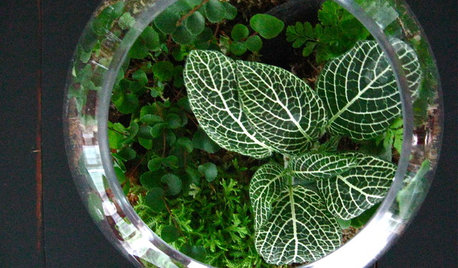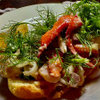Make your own Pancake Mix?
plllog
9 years ago
Related Stories

DECORATING GUIDESDIY: Make Your Own Chalkboard Paint
3 simple steps to chalk it up in any color anywhere for cheap
Full Story
DIY PROJECTSMake Your Own Abstract Photo With Cocktail Umbrellas
Looking for a conversation piece? Experiment with your own version of this DIY photography project
Full Story
KITCHEN DESIGNRenting? 15 Ways to Make Your Kitchen Your Own
If you’re feeling stuck with a blah kitchen you can’t renovate, these small moves can help make it feel like home
Full Story
KITCHEN DESIGN18 Ways to Make a Kitchen Your Own
Give Your Kitchen a Personal Stamp With Color, Finishes and Surprise
Full Story
HOUSEPLANTSGardens Under Glass: How to Make Your Own Terrarium
Be the master of a mini ecosystem indoors — the low-maintenance, highly rewarding kind that fits any room
Full Story
DECORATING GUIDESPersonal Spaces: Ideas for Making a Rental Your Own
Think creatively — and kiss your landlord if he or she allows you to paint those bare walls
Full Story
MOST POPULARHoliday DIY: 25 Ideas for Make-Your-Own Decor and Gifts
We show you how to create cute and clever Christmas and Hanukkah gifts, ornaments, wreaths and more
Full Story
EVENTSMaker Faire: Pancake Printers, an Electric Giraffe and So Much More
Passionate makers bring their latest wares to an annual festival where creativity meets tech
Full Story
REMODELING GUIDESOld and New Make for a Jolly Good Mix in England
Give an 18th-century country cottage a contemporary addition, and what do you get? A surprisingly cohesive-looking home
Full Story
ECLECTIC HOMESHouzz Tour: Vintage and New Make a Groovy Mix in Houston
A 1970s-loving designer sprinkles fur-covered benches, graphic art and vintage pieces among classic furnishings for an eclectic look
Full Story



grainlady_ks
plllogOriginal Author
Related Discussions
What soil mix for cannas, when you make your own?
Q
Making mixes froom your own dried herbs.
Q
Making your own potting mix --- a question about acidity and lime
Q
Tortillas - where do yours come from - do you make your own?
Q
annie1992
plllogOriginal Author
grainlady_ks
barryv_gw
plllogOriginal Author
annie1992
plllogOriginal Author
grainlady_ks
plllogOriginal Author
grainlady_ks
plllogOriginal Author
grainlady_ks
plllogOriginal Author
grainlady_ks
plllogOriginal Author